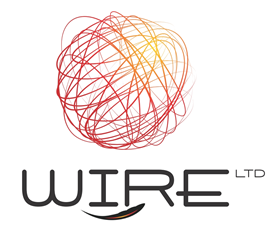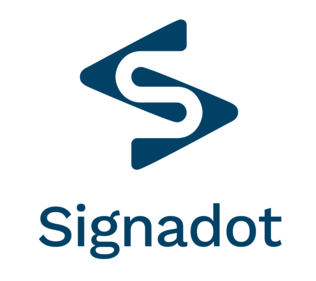 Website: www.patientpay.com
Website: www.patientpay.com
Founder: Tom Furr
Headquarters: Durham, North Carolina
Year Founded: 2008
Employees: 9
Investors: Super Angels
Twitter: @patientpay
LinkedIn: www.linkedin.com/company/patientpay-inc-?trk=top_nav_home
Brief Company Description: PatientPay develops innovative solutions that make healthcare billing, payment and reconciliation easier, faster and less costly.
Product Overview
The typical paper-based healthcare bill costs as much as $0.75 to produce and issue. Ample evidence shows that three statements need to be issued before a patient deals with their outstanding balance, raising the base cost to $2.25 per bill. Factoring in insurance claims review to determine cost, manual payment processing and posting along with the slow-acting patient, that bill can take a month or more before payment is received with a total cost of seven-to-nine dollars to process. PatientPay, a patented online service, cuts the cost to produce the bill and the time to get paid in half. Further, the manual task of reconciling bills with payments is automatic with PatientPay; boosting medical office productivity and profitability.
In addition, patients no longer face the risk of embarrassment at their doctors’ office due to outstanding balances from the slow deliver of paper statements in the U.S. mail as they now have a straight-forward online information repository that provides bills immediately when due, paid, for what and when. Importantly, PatientPay can be embedded in any popular Practice Management System (PMS) software so office administrative personnel do not have to learn a completely new task ensuring benefits are realized by the healthcare practice quickly.
PatientPay eliminates the costly and complicated paper-based billing method used by the overwhelming majority of healthcare providers. It drives down the expense and drives up the productivity associated with this activity by at least a factor of two. Since PatientPay reduces the time to payment in half, healthcare professionals realize improved cash flow and reduced accounts receivables.
Founder’s Story
My involvement with web-based businesses goes back to when the Internet was just being recognized and harnessed as a commercial environment. In 1993, I co-founded an online ecommerce company, Kenetics Inc., that offered a turnkey website and micro-payment solution for small businesses. In 1995, Kinetics was sold to Smart Online, a publicly-held SaaS company that provides commonly used applications to small businesses. I served as Chief Operating Officer, Chief Strategy Office and board member there until 2008 when the entrepreneur in me rose up after learning how healthcare payments were processed used paper and manual entry. This manual process was in light of a growing market that is estimated to be a $300 billion market opportunity by 2015, according to the Aite Group.
So, after seeing the potential growth opportunity I decided to jump back into the startup game to build a solution. In the course of this journey I uncovered a number intriguing contradictions, among them was the disparity between the application of technology in medical practices as it regards to what can be found in examination rooms versus the front/back office used to run a practice. The strides made in medical technology have been impressive. Yet, the overwhelming majority of healthcare providers use the same method to bill for services as was seen in the seventies and eighties. In addition, the rise of high deductible healthcare plans is also beginning to impact accounts receivables of all medical practices, making faster payments very important for cash flow.
A big need with a big market opportunity was a big impetus for me to frame, found, begin to fund and make real what PatientPay is today…and will be tomorrow.
Marketing/Promotion Strategy
PatientPay is appealing to three distinct but related markets sequentially and with different methodologies. The markets are: PMS vendors, healthcare providers and patients.
There are about 300 PMS vendors serving the highly fragmented U.S. healthcare provider market. We’re pursuing them using networking techniques, presence at industry events and digital marketing. Since PMS vendors are more focused on clinical areas, their appeal to partner with us is to realize a new and highly profitable revenue stream from the financial transactions. The connections with the medical practices are in-place via PMS vendors. By way of our service being embedded in the PMS application we gain entry and can make the appeal to the healthcare provider.
To secure the participation of medical practices we are equipping the PMS vendors’ sales forces with knowledge and material about PatientPay, using database marketing and various forms of digital marketing that are branded as the PMS vendor which is a trusted source by the practice. This approach is validated by a recent Aite report that found a practice would prefer to purchase financial service products from their PMS vendor versus directly from financial service vendors. In turn, once a medical practice opts to offer PatientPay, we’ll reach out to patients via email that is branded as coming from the practice (as it is now common practice for doctors to capture patient email addresses) noting they can pay the bill for the latest set of charges from their doctor by accessing the PatientPay site, again practice-branded.
How We Differentiate from the Competition
PatientPay disrupts the current (and antiquated) paper bill model while it underscores the inadequacies of traditional bill payment portals that require traditional APIs to get patient balance data in and out of the 300 PMS vendors on the market today. Without hyperbole, there’s nothing like it; and several patents validate this fact. Further, it complements in-place PMS software through its ability to instantly integrate with those systems without any APIs for getting data about patient balances and, thus, bring more value and utility to them.
Business Model
PatientPay is offered free to PMS vendors, without any required investment, free to medical practices, no involved training classes necessary, and free to patients. PatientPay doesn’t realize revenue until a patient pays a bill using it just like other payment services such as Square or PayPal.
Current Needs
PatientPay is looking to hire people who share our vision and would like nothing better than to fundamentally change the way healthcare providers bill and collect patient balances.
PatientPay – www.patientpay.com












